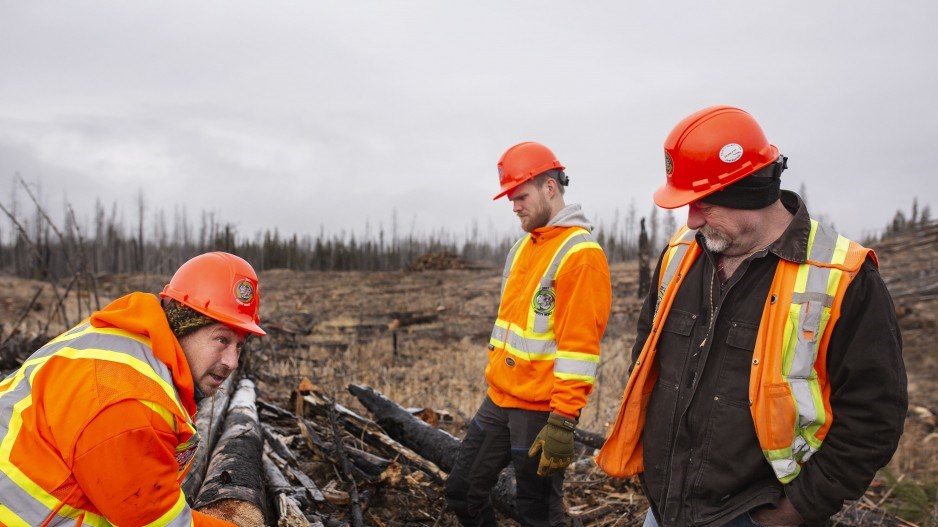The B.C. government is making regulatory and pricing changes to allow for quicker recovery of timber from wildfires for use in sawmills, pulp and pellet mills.
As BIV News reported earlier this year, timber salvaged after forest fires can still have value, if only for pulp and pellet production, and can reduce the risk of future fires. But it needs to be salvaged quickly.
In January, at the BC Natural Resources Forum, Bruce Blackwell, principal of Blackwell and Associates, estimated there may be up to five million cubic metres of fibre each year – about 11 per cent of the province’s total annual allowable cut of 46 million cubic metres – that could be salvaged after forest fires.
But after about a year, fire-damaged trees dry out, crack and become useless for any kind of sawmilling, so it is important that the salvaging be done quickly. That requires some regulatory streamlining.
The B.C. government today announced changes to the Interior Appraisal Manual – effective April 1 – to streamline the permitting to allow forestry companies and First Nations to conduct salvage operations in a more timely manner.
"Wildfires are increasingly having devastating impacts on our communities and economies," Andrew Mercier, minister of State for Sustainable Forestry Innovation, said in a press release.
"During my visits in forestry communities throughout the province, speeding up salvage is something I've been hearing a lot from people. Making the salvage of fire-damaged wood faster, easier and more economic means more forestry operations can access fire-damaged wood, supporting forestry-dependent regions and forestry workers."
Salvage cutting permits have been issued for more than 1 million cubic metres of timber from 2023 forest fires -- about 28,000 logging truck loads worth -- the government said in its news release.
The changes are being welcomed by the BC Pulp and Paper Coalition and Council of Forest Industries (COFI).
"The pulp and paper industry has always used wood considered to be waste - sawdust, shavings, chips and others - to make household staples," said BC Pulp and Paper Coalition general manager Joe Nemeth.
"Wildfire salvage is yet another excellent, sustainable source of fibre. With government increasing the ability to access this burned timber, our mills, our employees and our communities have greater stability."
"Salvaging wildfire-damaged timber on a timely basis can help restore areas for wildlife and recreation, make communities safer, and provide residual fibre that can help sustain jobs and local economic activity," added COFI president Linda Coady.
In addition to the recent regulatory changes, the B.C. government is also convening what it calls a wildfire salvage leadership committee to oversee the implementation, measuring and reporting on salvage progress, and is working on a new wildfire salvage guidebook.
"This government initiative will give the mill access to more fibre, which will contribute to sustaining our operations in the long run,” said Thomas Hoffman, fibre manager for Kruger Kamloops.
“Seeing partners working towards a shared goal and coming up with innovative solutions to support the industry, First Nations and the community is the way forward."

